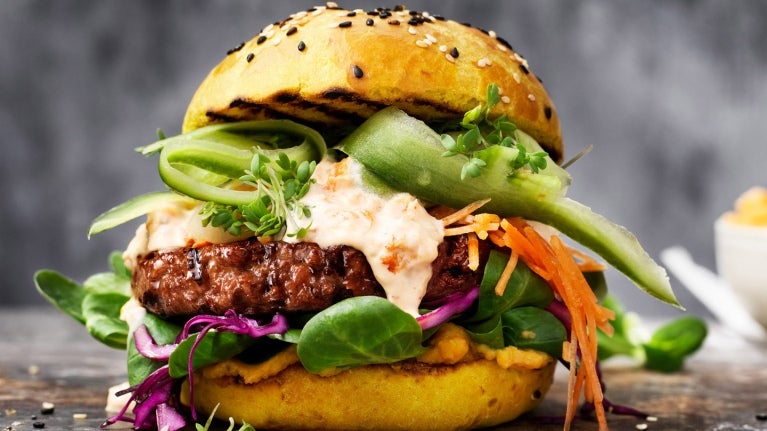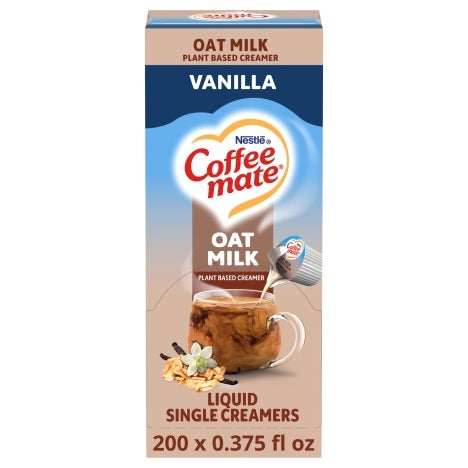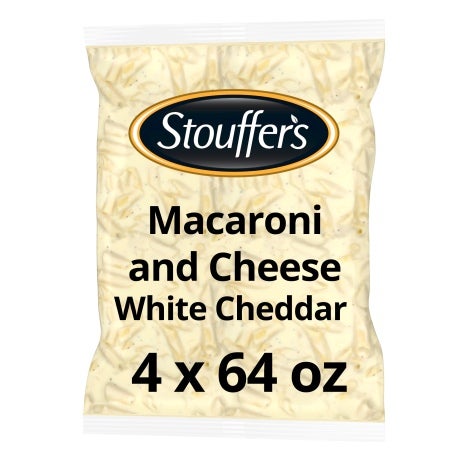
7 Ways to Promote Plant-Based Proteins
Demand for meat-free foods has had a major impact on foodservice. Learn what’s happening in plant-based cooking and how you can profit.
Are consumers losing interest in plant-based meats? Some plant-based meat manufacturers have reported sales declining, while others have reported sales increasing. Many factors go into meat-free product sales, including a recent rise in plant-based chicken sales and more consumers purchasing frozen over refrigerated products.1
Consumers, however, have not lost interest in plant-based foods. In fact, 62%, or 79 million households in the United States, bought plant-based products in 2021, a growth of 6% over 2020. The fastest-growing plant-based food categories, according to the Plant Based Foods Association, are currently eggs, ready-to-drink beverages, and creamer. The leading categories continue to be milk and meat.2
A hefty 71% of the general population still eats meat, while 22% consider themselves flexitarian. Data also shows that 60% of consumers like plant-based foods that showcase the original fruit or vegetable, while the other 40% prefer plant-based foods that taste more like their traditional equal.3
Menu creativity will ultimately help introduce or refresh plant-based offerings while sparking consumer interest in unique new options. Read on for ideas.
- Offer a plant-based version of a menu favorite. Is your restaurant famous for its wings and chicken tenders on game day? Offer a choice of spicy cauliflower wings and barbecue plant-based chicken tenders with a dip trio. Do customers love your spaghetti and meatballs? Offer a version with plant-based meatballs or meat-free crumbles. Is seafood your forte? Use cooked, diced beets to mimic the tuna in a poke bowl.
- Create your own veggie burger. Ready-to-go plant-based burger patties will remain a convenient, labor-saving option, but you can also stand out by offering a chef-created burger that combines ingredients such as beans, mushrooms, and trending spices to form a truly one-of-a-kind burger that’s only found in one place.
- Make sides and apps irresistible. Experiment with creating new plant-based menu items using plant-based meat crumbles, veggie breakfast sausage, or vegetables. Think macaroni and cheese with plant-based chicken crumbles, faux sausage and gravy, or a BLT with banana peel bacon and avocado.4 Consumers following a flexitarian or plant-based diet will seek out unique new menu items and tell their friends.
- Embrace legumes. One of the best sources of plant-based protein is beans, and there are many delicious entrées and appetizers to make with them. Try chili, bean nachos, quesadillas, soups, bean salads, and burrito bowls.
- Make it Instagrammable. How do you make a plant-based dish look delicious enough to end up on Instagram (ie, make other people want to come in and order it)? Pile up the toppings, drench it with cheese or sauce, give it a sprinkle of fresh herbs, and serve it on a sparkling clean plate.
- Amaze customers with toppings. Go beyond the expected and top sandwiches, burgers, and entrées with ingredients like mushroom bacon; honey; jalapeños; coleslaw; pickled onions; guacamole; mustard seeds; pineapple; roasted tomatoes; roasted peppers; caramelized onions; burrata; or kimchi.
- Explain your motivation. Consumers love a good story and how it connects to your brand. Don’t miss an opportunity to explain your motivation for offering plant-based menu items on your website, menu, and/or social channels. Are you supporting a local supplier, using seasonal ingredients, nurturing a healthy habit of your own, or working toward a more sustainable operation? Let customers know that your choices are more than a passing trend or gimmick.
- At Crossroads Kitchen in Los Angeles, the Crossroads Bowl features basmati rice, heirloom butter beans, pickled celery, pickled red onion, celery leaves, watermelon radish, cherry tomatoes, whole grain mustard vinaigrette, and lion’s mane shawarma
- The Phoagie at Middle Child Clubhouse in Philadelphia features hoisin eggplant, avocado, fresh and frizzled onions, cilantro, and pho sauce in a seeded hoagie
- Trolley Fries at Pow Pow in Washington D.C. are hand-cut fries topped with kimchi, Korean ketchup, togarashi mayo, cashew cheddar, and scallions
Sources: 1. New York Times: Beyond Meat Is Struggling, and the Plant-Based Meat Industry Worries (2022). 2. Plant Based Foods Association, 2021 U.S. Retail Sales Data for the Plant-Based Foods Industry (2022). 3. Datassential: Webinar - Plant-Based Paradise (2022). 4. Vegetarian Times: Banana Peel Bacon - Have We Gone Too Far? (2022).
The information provided is based on a general industry overview and is not specific to your business operation. Each business is unique, and decisions related to your business should be made after consultation with appropriate experts.






